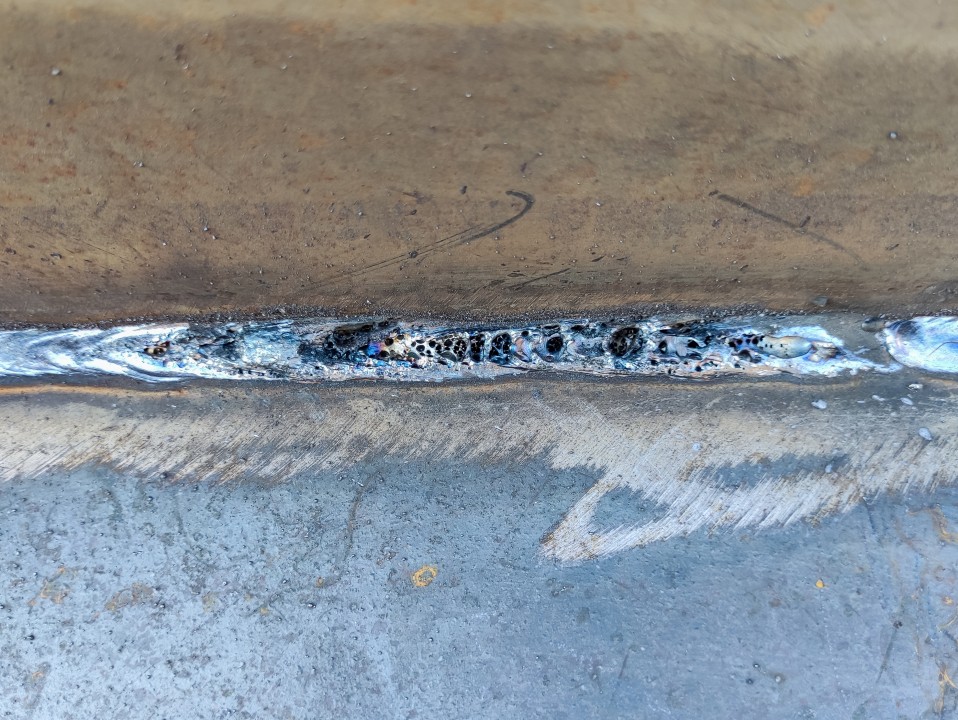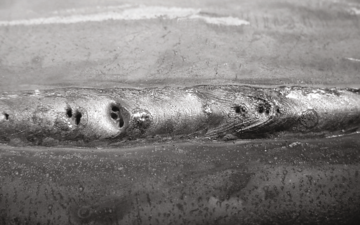Porosity in Welding: Identifying Common Issues and Implementing Best Practices for Prevention
Porosity in welding is a prevalent issue that often goes undetected up until it creates substantial issues with the stability of welds. In this discussion, we will certainly check out the vital factors adding to porosity formation, analyze its harmful results on weld efficiency, and talk about the finest techniques that can be adopted to reduce porosity incident in welding procedures.
Usual Causes of Porosity

Utilizing dirty or wet filler materials can present impurities right into the weld, adding to porosity issues. To minimize these typical reasons of porosity, complete cleansing of base steels, proper securing gas choice, and adherence to optimum welding parameters are crucial techniques in attaining high-grade, porosity-free welds.
Effect of Porosity on Weld Top Quality

The existence of porosity in welding can considerably endanger the architectural stability and mechanical residential or commercial properties of welded joints. Porosity develops voids within the weld metal, compromising its total stamina and load-bearing capacity. These spaces function as stress and anxiety focus points, making the weld more susceptible to breaking and failure under applied loads. Furthermore, porosity can minimize the weld's resistance to deterioration and various other ecological variables, further diminishing its long life and performance.
Among the key effects of porosity is a decline in the weld's ductility and sturdiness. Welds with high porosity degrees often tend to exhibit reduced impact toughness and lowered capability to warp plastically prior to fracturing. This can be specifically concerning in applications where the welded components go through dynamic or cyclic loading conditions. In addition, porosity can hinder the weld's capacity to successfully transfer forces, leading Read Full Report to premature weld failure and potential safety threats in vital frameworks.
Best Practices for Porosity Avoidance
To boost the structural integrity and top quality of bonded joints, what certain procedures can be executed to decrease the incident of porosity throughout the welding process? Making use of the correct welding method for the certain material being bonded, such as adjusting the welding angle and weapon setting, can further protect against porosity. Routine inspection of welds and instant removal of any type of concerns recognized throughout the welding procedure are vital techniques to protect against porosity and generate high-grade welds.
Significance of Appropriate Welding Strategies
Applying appropriate welding techniques is vital in making sure the structural honesty and quality of bonded joints, building on the structure of effective porosity avoidance steps. Welding techniques straight impact the general strength and longevity of the bonded structure. One key aspect of correct welding techniques is keeping the correct warmth input. Too much heat can lead to raised porosity as a result of the entrapment of gases in the weld swimming pool. Alternatively, inadequate warmth might cause insufficient combination, producing potential weak points in the joint. Furthermore, making use of the proper welding criteria, such as voltage, existing, and travel rate, is crucial for attaining sound welds with very little porosity.
In addition, the option of welding process, whether it be MIG, TIG, or stick welding, must straighten with the particular requirements of the project to ensure optimal results. Correct cleansing and prep work of the base metal, her response in addition to selecting the appropriate filler product, are additionally vital components of efficient welding strategies. By adhering to these finest practices, welders can minimize the risk of porosity development and create this contact form high-grade, structurally audio welds.

Checking and Quality Assurance Measures
Checking procedures are important to identify and prevent porosity in welding, guaranteeing the toughness and sturdiness of the final product. Non-destructive screening methods such as ultrasonic testing, radiographic screening, and visual inspection are commonly utilized to recognize prospective defects like porosity.
Conducting pre-weld and post-weld assessments is additionally essential in maintaining high quality control standards. Pre-weld evaluations include confirming the products, devices settings, and tidiness of the workspace to avoid contamination. Post-weld inspections, on the various other hand, analyze the last weld for any kind of issues, consisting of porosity, and confirm that it meets defined criteria. Applying a detailed quality assurance strategy that includes complete screening procedures and evaluations is critical to reducing porosity concerns and ensuring the overall high quality of welded joints.
Conclusion
In final thought, porosity in welding can be a typical concern that influences the quality of welds. By identifying the common sources of porosity and executing finest techniques for avoidance, such as correct welding strategies and testing actions, welders can make sure top quality and trusted welds. It is important to focus on avoidance techniques to minimize the occurrence of porosity and preserve the honesty of welded frameworks.